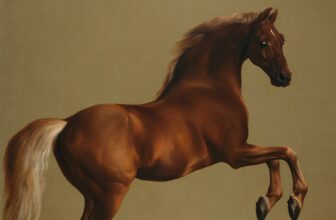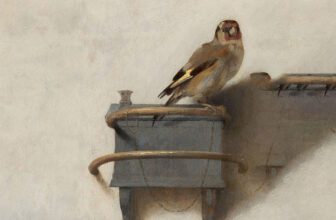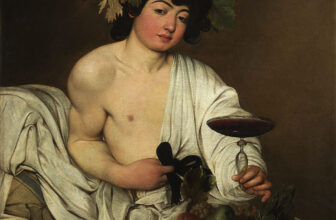
The Tree of Life by Gustav Klimt
A Journey Through Symbolism, Style, and Legacy
In the golden swirls and intricate branches of Gustav Klimt’s Tree of Life, we find a universe teeming with symbolism, philosophy, and the artist’s unmistakable style. Painted during the early 20th century, Klimt’s masterpiece has fascinated art lovers for generations. But what is the true meaning behind this mysterious work?
To understand Klimt’s Tree of Life, we must delve deep, not just into the canvas, but into the mind of the man who created it, the world he lived in, and the legacy his brush left behind.
A Glimpse into Gustav Klimt’s World
Before we explore the meaning of The Tree of Life, let’s get acquainted with its creator.
Gustav Klimt was born in 1862 in Baumgarten, near Vienna, Austria. He rose to fame in the late 19th and early 20th centuries as one of the leading figures of the Vienna Secession, an art movement that sought to break free from the constraints of academic art. Klimt’s style was both radical and ornamental. He blended symbolic meaning with intricate design, often incorporating gold leaf, eroticism, mythological themes, and an emphasis on the female form.
He was controversial and celebrated in equal measure, feared by the traditionalists and adored by avant-garde circles. In Klimt’s world, art was not merely decoration. It was a portal to emotion, intellect, and the sacred.
At its core, The Tree of Life is a symbolic painting. It was created as part of the Stoclet Frieze, a series of three mosaics for the Palais Stoclet in Brussels, a luxurious private residence designed by architect Josef Hoffmann. Klimt’s contribution was not a standalone painting, but a decorative mural, which included The Tree of Life, Expectation, and Fulfillment.
But the Tree is undoubtedly the centerpiece. So, what does it mean?
A Universal Symbol
The concept of the “tree of life” appears in cultures around the globe. From ancient Mesopotamia to Norse mythology, from the Kabbalah to Christianity, the Tree of Life represents a connection between the heavens, earth, and the underworld. It is a metaphor for growth, eternity, interconnectedness, and the cycle of life and death.
In Klimt’s version, this idea is expressed through an elaborate and spiraling tree, its branches twisting in mesmerizing, golden curls that suggest both the beauty and complexity of existence. The roots of the tree sink deep into the ground, while the branches stretch infinitely into the sky. It is a bridge between the tangible and the transcendent.
The Tree as a Cosmic Axis
Art historians often point out that Klimt’s Tree of Life functions as an axis mundi, a symbolic world center connecting the spiritual and material realms. In ancient belief systems, the axis mundi is where heaven and earth meet. By positioning the tree at the heart of the frieze, Klimt suggests that life’s meaning is found in the connection between opposites: birth and death, love and loss, matter and spirit.
Expectation and Fulfillment
On either side of the tree are two key figures: a woman on the left, adorned in an Egyptian-like profile pose (Expectation), and a couple embracing on the right (Fulfillment). These figures expand the meaning of the tree into a narrative of human desire and emotional union.
The woman in Expectation appears contemplative, almost anxious, awaiting something unseen. Meanwhile, the couple in Fulfillment are caught in an intimate embrace, symbolizing not just romantic love, but a culmination of longing. In this way, Klimt uses the tree not just as a symbol of life, but as a map of the emotional journey, from hope to realization.
What Type of Painting is It?
While many call it a painting, Klimt’s Tree of Life is more accurately described as a mosaic frieze. It was made using a combination of materials, including gold leaf, enamel, and semi-precious stones, typical of Klimt’s luxurious style during his Golden Phase.
However, Klimt did not execute the final mosaic himself. He created the cartoons, preliminary drawings and designs, which were then translated into mosaic form by skilled artisans. This process was overseen by the Wiener Werkstätte, the Viennese collective of artists and craftsmen co-founded by Klimt’s close collaborator, Josef Hoffmann.
Art Nouveau and Symbolism
Stylistically, the Tree of Life falls under the umbrella of Art Nouveau, a movement characterized by flowing lines, natural forms, and decorative beauty. But it also belongs to the world of Symbolism, an art movement that sought to convey the invisible, emotions, dreams, spiritual truths, through metaphor and allegory.
In Klimt’s Tree of Life, these movements merge seamlessly. The sinuous branches are pure Art Nouveau, while the figures and the tree’s cosmic symbolism are deeply Symbolist.
Where is Klimt’s Tree of Life Today?
The original Tree of Life is located in the Palais Stoclet in Brussels, Belgium. Unfortunately for the public, the mansion remains a private residence and is not open for regular viewing. The Stoclet Palace was commissioned by Belgian financier Adolphe Stoclet and is now a UNESCO World Heritage Site. Its interiors, including Klimt’s frieze, are considered some of the finest examples of early modernist decorative arts.
Because the original is not accessible, many people encounter The Tree of Life through reproductions, either printed versions, digital art, or exhibitions that feature Klimt’s sketches and preparatory designs. Some museums and galleries have even created reconstructions of the Stoclet Frieze using Klimt’s original designs.
In Vienna, the Museum of Applied Arts (MAK) holds some of Klimt’s original studies and designs for the Stoclet Frieze. Visitors can gain insight into his process and the level of precision involved in turning his vision into a permanent mosaic.
How Much Is Gustav Klimt’s Tree of Life Worth?
Since the original mosaic is a site-specific piece and part of a UNESCO-protected building, it is not for sale and likely never will be. But if it were ever appraised (purely hypothetically), art experts believe its value would be in the hundreds of millions of dollars.
To give a sense of the scale:
In 2006, Klimt’s Portrait of Adele Bloch-Bauer I sold for $135 million, making it the most expensive painting ever sold at the time.
His other works have consistently sold for over $100 million, and his name remains one of the most lucrative in the art world.
Given the significance of The Tree of Life, its cultural heritage status, and the materials used (gold leaf, mosaic, and marble), its value would likely exceed any previous Klimt sale, possibly estimated at $300–500 million or more, according to some art historians.
However, it’s important to note: the Tree of Life is priceless, in the truest sense. Its value transcends money, resting instead in its spiritual, artistic, and historical significance.
The Tree’s Legacy and Popular Appeal
What makes Klimt’s Tree of Life so universally appealing?
Part of the answer lies in its visual seduction. The gold tones, swirling lines, and rich symbolism draw the viewer in like a magnet. But there’s more. The Tree of Life speaks to something deeply human, our longing to understand our place in the world.
In today’s chaotic, modern age, Klimt’s tree still whispers ancient truths: that we are all part of something bigger, that beauty matters, that love and longing shape our journey. It is no surprise that the image is widely reproduced on everything from wall tapestries to journals to tattoos.
Klimt has become a kind of oracle for modern seekers, those who find spiritual nourishment in art. In that way, the Tree of Life has become more than a masterpiece. It is a living symbol, one that continues to branch out and bloom in the hearts of millions.
Why the Tree of Life Still Matters
Standing before the Tree of Life, even in reproduction, one feels a sense of stillness and awe. It is a painting that does not just demand to be looked at, but to be felt, pondered, and internalized.
Gustav Klimt gave us more than gold and swirls. He gave us a vision of what life is: intricate, infinite, interconnected. His Tree of Life is not just rooted in myth, it is rooted in us. In every loss, every hope, every embrace. It is a mirror of existence and a window into the divine.
So whether you’re an art historian, a spiritual seeker, or someone drawn to beautiful things without knowing why, the next time you see Klimt’s Tree of Life, look a little deeper.
You might just find yourself.




